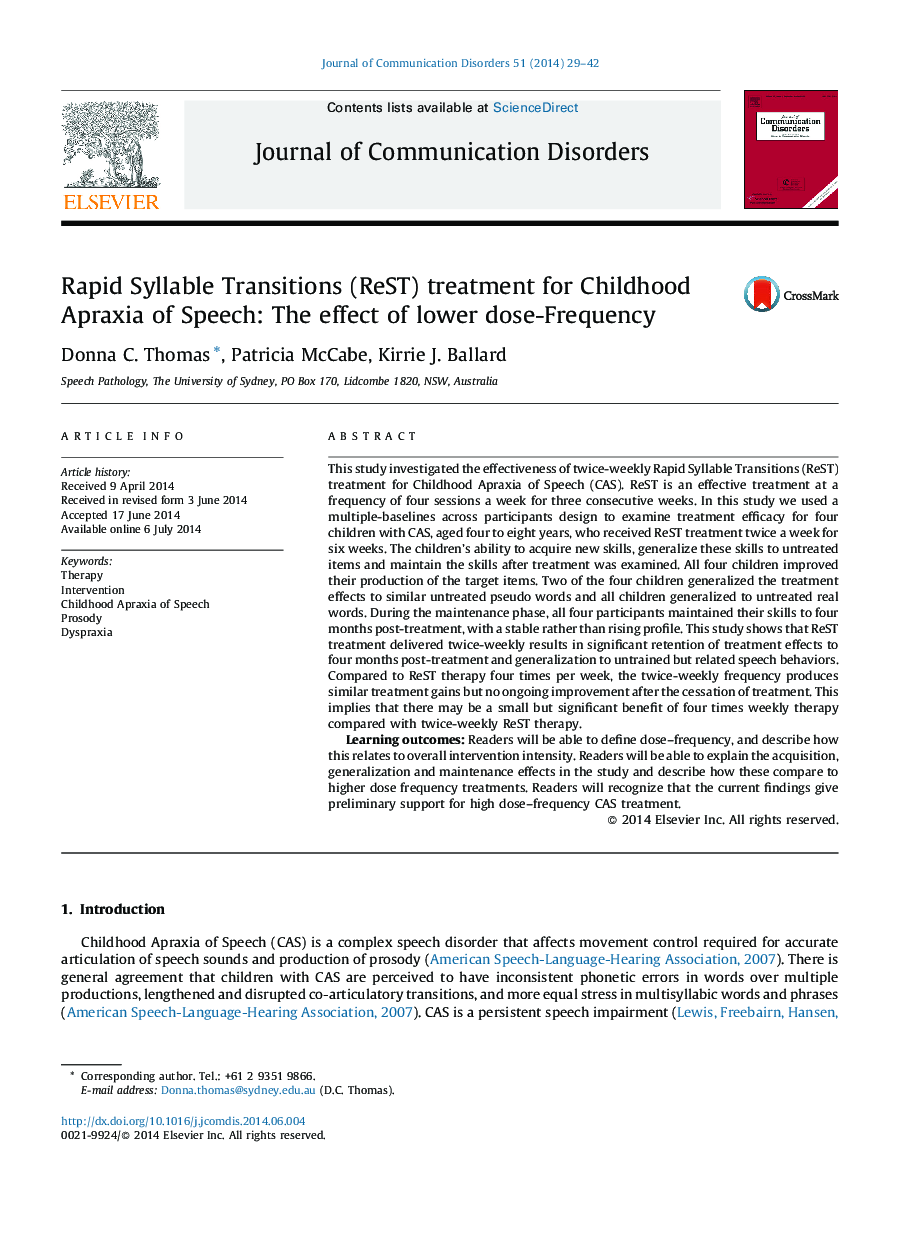| کد مقاله | کد نشریه | سال انتشار | مقاله انگلیسی | نسخه تمام متن |
|---|---|---|---|---|
| 910769 | 1473105 | 2014 | 14 صفحه PDF | دانلود رایگان |

• We examined the efficacy of twice-weekly ReST treatment for CAS.
• Children improved their production of targeted speech skills and generalized to untreated real words and some untreated pseudo words.
• The improvement in treated and untreated skills was maintained up to 4 months post-treatment.
• No ongoing improvement was shown in the maintenance phase, as has been previously reported in high dose frequency ReST.
This study investigated the effectiveness of twice-weekly Rapid Syllable Transitions (ReST) treatment for Childhood Apraxia of Speech (CAS). ReST is an effective treatment at a frequency of four sessions a week for three consecutive weeks. In this study we used a multiple-baselines across participants design to examine treatment efficacy for four children with CAS, aged four to eight years, who received ReST treatment twice a week for six weeks. The children's ability to acquire new skills, generalize these skills to untreated items and maintain the skills after treatment was examined. All four children improved their production of the target items. Two of the four children generalized the treatment effects to similar untreated pseudo words and all children generalized to untreated real words. During the maintenance phase, all four participants maintained their skills to four months post-treatment, with a stable rather than rising profile. This study shows that ReST treatment delivered twice-weekly results in significant retention of treatment effects to four months post-treatment and generalization to untrained but related speech behaviors. Compared to ReST therapy four times per week, the twice-weekly frequency produces similar treatment gains but no ongoing improvement after the cessation of treatment. This implies that there may be a small but significant benefit of four times weekly therapy compared with twice-weekly ReST therapy.Learning outcomes: Readers will be able to define dose–frequency, and describe how this relates to overall intervention intensity. Readers will be able to explain the acquisition, generalization and maintenance effects in the study and describe how these compare to higher dose frequency treatments. Readers will recognize that the current findings give preliminary support for high dose–frequency CAS treatment.
Journal: Journal of Communication Disorders - Volume 51, September–October 2014, Pages 29–42